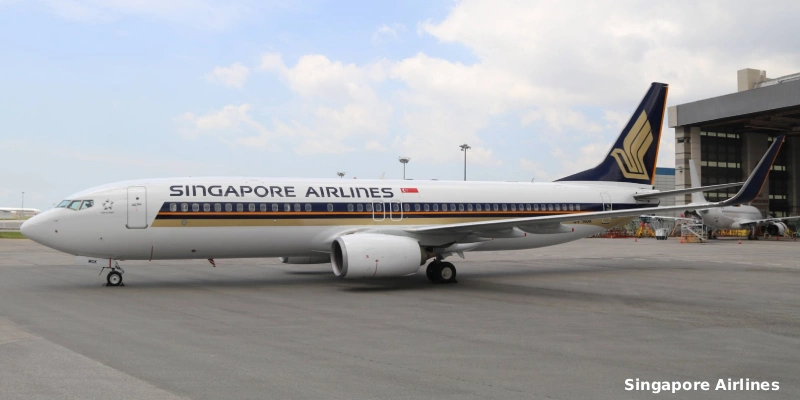This week, an Airbus A321XLR (“FT3”, MSN11080) flight test aircraft returned from its four-day cold weather ground test in Iqaluit, northern Canada.
A few weeks earlier, one of the other A321XLR test aircraft (“FT2”, MSN11058) made a similar visit to Iqaluit. On that initial occasion the mission was to test the operation of the hydraulics and other systems at extreme cold temperatures – after an overnight soak at minus 40 degrees Centigrade.
Ground testing the water and waste system
“The objective of this most recent cold-weather campaign was to validate the aircraft operation in cold weather for ground operations,” says Tuan Do, Lead Flight Test Engineer.
“This time around we tested the cabin water and waste system – which required the temperatures inside the unheated cabin to ‘soak’ at below -15 degrees Centigrade overnight. To this end, several cold soaks were conducted over successive nights with the doors left open, while the outside temperature was around minus 20 degrees Centigrade.
→ Airbus A321XLR could suffer further delays
In each case different heating and insulation configurations were applied for subsequent comparative analysis by the engineering department.”
As part of this, a new ‘cold weather option’ available for A321XLR operators, was tested in real conditions for the first time – it adds heaters to ensure the system doesn’t freeze-up overnight. The tests also validated the ‘standard aircraft’ configuration – ie. without the optional package activated – and a weight-saving opportunity configuration, with less insulation.
Every airliner cruises at high altitudes where the outside temperatures are much lower. However, inside the cabin the water and waste systems operate in above zero temperatures. This is why ground testing (in a completely powered-down state) is specifically called for – so that the ambient environment inside the cabin and below the passenger deck, where many systems are located, can cold-soak at sub-zero temperatures.
Hydraulics, oil and electrical system testing at -40 degrees Centigrade
“During our first five-day visit to Iqaluit a month ago, when we powered-up the aircraft in the morning, we would ‘wake-up’ the hydraulics, electrics, and other systems and see how long it took to operate the aircraft and get it ready for taxiing and takeoff.”
“There were also some flights to validate the landing gear operation in very cold temperatures. Notably, the A321XLR features an uprated landing gear – to support the higher maximum take-off weight of the aircraft (whose MTOW is 101 metric tonnes, vs 97 tonnes for the A321LR). Consequently, the shock-absorbers on this new variant are designed to handle higher loads compared with those on the other A320 Family members.
→ Airbus performs flight test with an A321neo powered by 100% SAF fuel in both engines
The test objective was to check the ‘weight-on-wheels’ signal, so the aircraft knows when the main landing gear shock absorbers are compressed or extended.
“There are many systems on the aircraft which depend on the weight on wheels signals to tell them whether the aircraft is in flight or on ground. So during our first visit to Iqaluit we verified how the weight-on-wheels function is affected by the physical changes in the main landing gear, and how shock absorber stiffness is affected by cold temperatures,” recalls Tuan.
Another design feature of the -XLR related to hydraulics which needed to be evaluated in the cold environment were new hydraulic lines which pass through Rear Centre Tank, located aft of the Landing Gear bay. “Our design office colleagues wanted us to check that the routing of the pipes did not significantly affect the hydraulic temperatures and operations after warm-up of the aircraft,” notes Tuan.
Other cold weather challenges, applicable for any aircraft, include ensuring that hatches don’t freeze shut, or that the systems in general don’t freeze up – not only the water pipes, oil and hydraulics systems, but also the electrical system, especially batteries.
“Batteries don’t hold as much charge or provide as much power output when they are at low temperatures. Meanwhile, oil and hydraulics become very viscous at very low temperatures which makes it hard to move flight control surfaces around and drive pumps etc. So you need to heat the aircraft up and its pipework to be able to operate the aircraft,” explains Tuan.
Related Topics
Singapore Airlines Bids Farewell to Its Final Boeing 737-800 This Week
Boeing Receives FAA Authorization to Increase 737 MAX Production to 42 Aircraft per Month
Virgin Atlantic Selects Boeing to Enable High-Speed Wi-Fi Across Its 787 Fleet
Boeing Receives European Union Approval for Spirit AeroSystems Acquisition

Plataforma Informativa de Aviación Comercial con 13 años de trayectoria.




